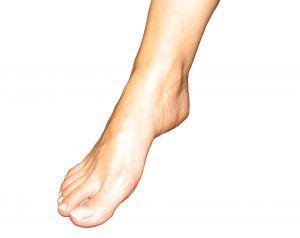Most of us must get up on our feet at one point or another. This may seem like an ordinary task, but for those suffering from pain associated with fallen arches, getting on your feet can be an incredibly painful experience. Pes planus, or fallen arches, is a common condition in which the arch of the foot collapses, causing it to come into contact with the ground.
What are Foot Arches?
Foot arches are springy, elastic structures that play an important role in both weight distribution and how you walk. The arches of your feet can be found by looking at the inside of your foot, where you will see a curve. When you set your foot down, this curve should not touch the ground. These curves are your arches. There are many bones, tendons, and muscles in your feet that make up foot arches.
How Fallen Arches Occur
Genetics play a large role in most cases of fallen arches. For these people, both feet are typically affected. Other causes of flat feet are lax ligaments, congenital conditions that affect the foot, and the aging process. The posterior tibial tendon is the main support structure for your arch, and years of use can weaken this tendon. Once this tendon becomes weak, it can become damaged and may cause fallen arches. Wearing high heels, obesity, traumatic foot injury and diabetes are among the stresses that can damage the posterior tibial tendon.
Symptoms
The most obvious symptoms of fallen arches are foot pain and discomfort. You might begin to have difficulty walking comfortably. Your foot might begin to turn out at the ankle, causing you to distribute too much of your body weight over the inner part of your feet. As a result of the decreased support from your arches, you could also experience misalignment of the foot, ankle, knee and lower back. Therefore, the pain of fallen arches extends well beyond your feet.
Complications
There are many complications that may go along with having fallen arches. Other foot problems may be exacerbated. For example, fallen arches can worsen or contribute to shin splints, stress fractures in the lower leg, bunions, and calluses. Also, because fallen arches result in additional strain to the ligaments and tendons that support the foot and ankle, other structures of the foot are prone to injury. Therefore, fallen arches could eventually lead to heel spurs, hip pain, lower back pain and ankle sprains. Fallen arches could even contribute to arthritis.
Easing the Pain
Over-the-counter insoles and arch supports are available to help ease the pain from fallen arches, but these may not conform to the needs of an individual. Alternatively, foot orthotics are arch supports that are custom-made for each individual. These are molded to the shape of your foot and can be moved from one shoe to another just like over-the-counter arch supports. If you are experiencing severe symptoms, you might want to avoid weight-bearing activities while wearing an ankle brace or a walking boot. Talk to your doctor about the treatments that are right for you.
Sources
http://www.arthritis-treatment-and-relief.com/fallen-arches-symptoms.html
http://ezinearticles.com/?Need-Relief-from-Flat-Foot-Pain?&id;=469115


